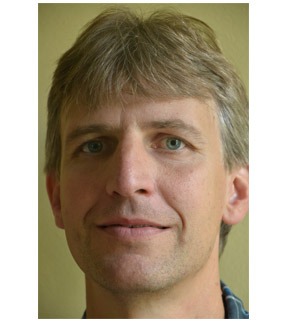
By Peter Müller-Barna
In rural areas inhabitants often do not have direct access to specialised Stroke Units. But in fact, it is well known that Stroke Unit care improves prognosis of stroke patients and is therefore recommended to all patients with stroke. It is a major public health challenge to bring stroke expertise to underserved areas. The use of telemedicine to ensure 24/7 access to consultation and care in rural areas is one of the major recommendations of the American Stroke Association in their policy statement on systems of care.
In our article (Müller-Barna et al, Stroke 2014) we present data about the largest and longest evaluation of telemedicine for stroke. It is about the TeleMedical Project for Integrative Stroke Care (TEMPiS) in rural Bavaria, Germany. With the telemedically linked Stroke Units (TeleStroke Units), patients in regional hospitals have around-the-clock access to consultations with vascular neurologists at stroke centres, including evaluation of brain imaging and patient examination via videoconferencing when needed. In addition to teleconsultations, TEMPiS TeleStroke Units are also supported by stroke centres in terms of education and quality management. In 2003, TeleStroke Units were introduced to 12 regional hospitals lacking neurology and neurosurgery departments. Telemedicine link them with two neurological stroke centres with vascular neurologists and other neurological experts. By 2012, there were 15 TeleStroke Units that had provided 31,864 consultations.
Between the first year of implementation and the end of 2012, the percentage of patients with stroke or transient ischaemic attack of the rural area served, who were treated at hospitals with TeleStroke Units rose from 19 to 78%. The number of patients receiving intravenous thrombolysis increased from 2.6 to 15.5% of all ischaemic strokes admitted to these TeleStroke Units. The median time between a patient’s arrival until thrombolysis was administered fell from 80 minutes to 40 minutes; exceeding American Heart Association/American Stroke Association’s “Target: Stroke” goal of treating at least 50% of patients within 60 minutes. The median time between onset of stroke symptoms and receiving thrombolysis decreased from 150 minutes to 120 minutes. From 2003 to 2012, the proportion of patients transferred to stroke centres from regional hospitals fell from 11.5% to 7%.
Therefore, we concluded that Telemedicine improved and sustained high-quality stroke care in rural Germany for patients without prompt access to specialised stroke centres.
The maximum time period of a TeleStroke project observed prior to our study is less than three years. There are reports from South Carolina, USA (REACH MUSC, 1,085 teleconsultations), Northern Alberta, Canada (210 teleconsultations) and Finland (106 teleconsultations). Over the ten-year period, a total of 31,864 teleconsultations were performed in the TEMPiS network.
The most important point was to get acceptance of the TeleStroke Units by the emergency services and the general physicians, but also by the population and political representatives. The acceptance was already good at the beginning but still improved over the last 10 years, as illustrated by the growing percentage of stroke patients admitted to hospitals with a TeleStroke Unit (from 19% to 78%). A Stroke Unit admission rate of 78% in a rural area is high, but indeed it is not satisfactory. The goal should be close to 100%. To achieve this aim, in 2013 we started to set up further TeleStroke Units in administrative districts so far lacking a (Tele-)Stroke Unit.
All regions without direct access to a Stroke Unit (or primary stroke centres) are candidates for a TeleStroke Unit. If sufficient local stroke expertise is available, a Stroke Unit can be run without telemedicine. However, TeleStroke Units can be established within a short time, supported by telemedical and educational expertise of tertiary stroke centres and provide high-standard Stroke Unit care to all local stroke victims. For sure, network structures always have to be adapted to regional circumstances.
In the hospitals with TeleStroke Units there are no neurosurgery departments available. The Telemedicine network is a great option to accelerate the emergency transfer of patients in need of neurosurgery. At the same time, telemedicine helps to avoid unnecessary transfers, because expert vascular neurologists serving as teleconsultants are involved in remote patient assessment by video-examination and interpretation of CT-scans.
Peter Müller-Barna is at the Department of Neurology, Krankenhaus Agatharied, Norbert-Kerkel-Platz, Hausham, Germany









